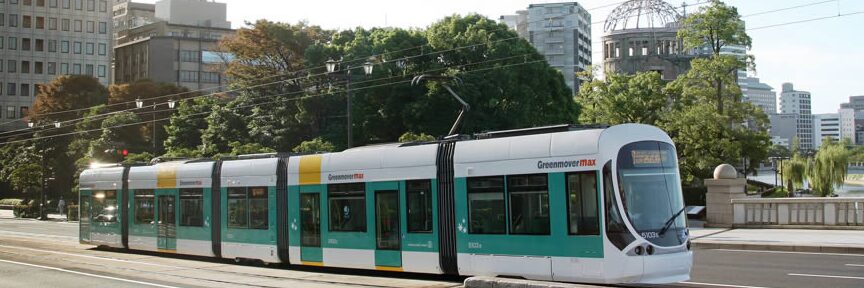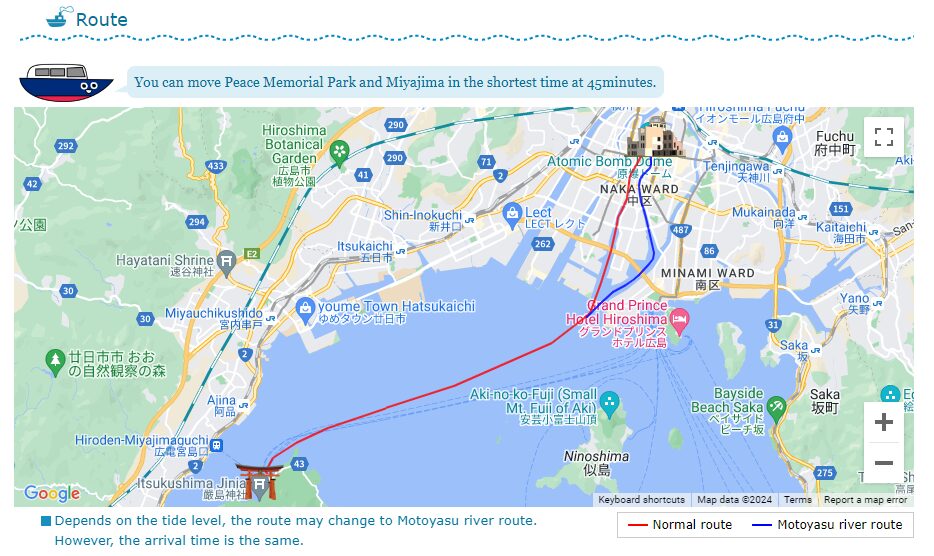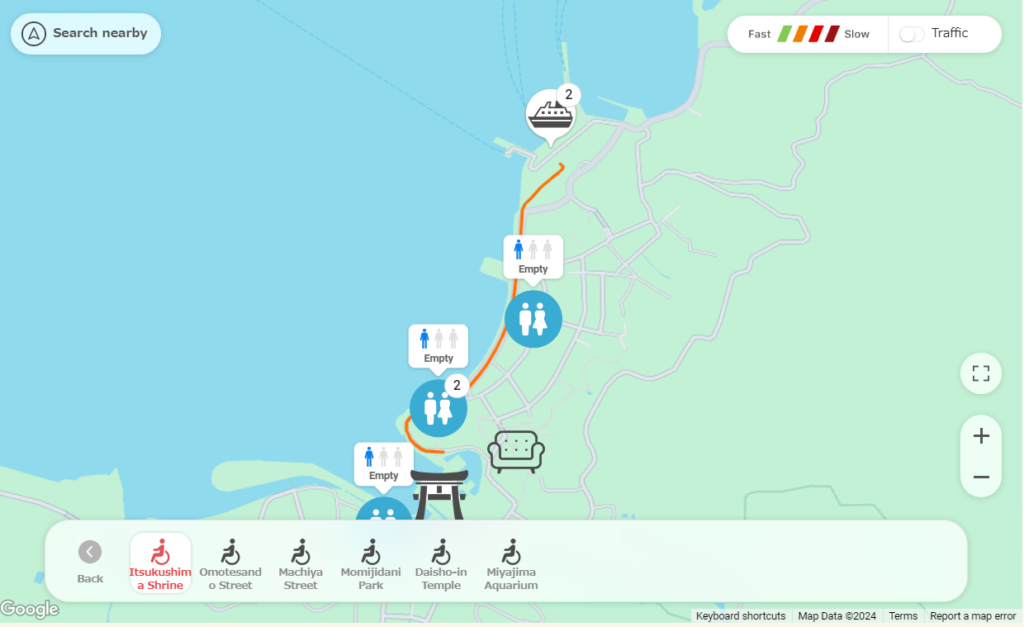Hiroshima is a city that tells a powerful story of resilience, hope, and rebirth. As you wander through its serene parks and bustling markets, you’ll discover a place where history meets vibrant culture.
Here’s what you’ll explore in this one-day itinerary:

Plan Your Hiroshima Adventure Today!
About Hiroshima

Hiroshima is a city located in the southwestern part of Japan, along the Seto Inland Sea.
From Osaka or Kyoto, it takes about 1.5 – 2 hours by bullet train. A day trip is definitely possible and can be quite enjoyable. Make sure to start your day early to make the most of your visit.
- Did you know? Hiroshima is home to an impressive 142 islands, each offering its own unique charm and beauty.
- City of Peace Hiroshima plays a significant role as an International City of Peace, sharing its message of hope and harmony with the world. This vibrant city is dedicated to promoting peace and cultural understanding on a global scale.
How to get to the Atomic Bomb Dome from Hiroshima Station
To get from Hiroshima Station to the Atomic Bomb Dome, you can conveniently take the streetcar/tram (Hiroshima Electric Railway) or the city loop bus “Meipuru-pu (Maple Loop).”
Option 1 – Using the Streetcar/Tram (Hiroshima Electric Railway)

Hiroshima Station → Genbaku Dome-mae (Atomic Bomb Dome)
| Line to board | Line 2 – Hiroden-Miyajima-guchi Line 6 – Eba |
| Fare (as of October 2024) | Adult 220 yen / Child 110 yen |
| Duration | approx. 17 minutes |
| IC card usage | Yes |
| JR Pass usage | No |
| Accessibility | Low-floor vehicles available Spaces for wheelchairs and strollers |

Option 2 – Using the City loop bus (Meipuru-pu)

The Meipuru-pu bus has a clear route, and it circles around the city, including stops at major attractions.
The name “Meipuru-pu” comes from a combination of “Maple” and “Loop.”
| Route to board | Orange route Green route Lemon route |
| Fare (as of October 2024) | Adult 220 yen / Child 110 yen |
| Duration | approx. 11 minutes |
| IC card usage | Yes |
| JR Pass usage | Yes |
| Accessibility | Low-floor buses available Look for buses with the “wheelchair” symbol on the front and side of the vehicle |

Hiroshima Peace Memorial (Atomic Bomb Dome)
The Hiroshima Peace Memorial, commonly known as the Atomic Bomb Dome(原爆ドーム)is one of the most iconic landmarks in Hiroshima. It serves as a powerful symbol of the city’s resilience and commitment to peace.

In 1996, the Atomic Bomb Dome was designated a UNESCO World Heritage Site, recognized for its historical and cultural importance.
The Hiroshima Peace Flame
The Peace Flame(平和の灯) in Hiroshima is a symbolic fire located in the Hiroshima Peace Memorial Park. This flame is pledged to burn until the day when all nuclear weapons are eliminated from the earth, serving as a powerful symbol of peace and anti-nuclear sentiment.

The structure represents a pair of hands, with the wrists together and the palms spread wide open towards the sky. This gesture symbolizes a plea for peace and a hopeful vision for the future.
Accessibility Features at Hiroshima Peace Memorial Park
Here is a summary of the accessibility features available when visiting the Hiroshima Peace Memorial Museum:
- Rest Area: There is a rest area (East Building B1F or Main Building) if you feel unwell. Contact the general information desk.
- Nursing Rooms: East Building B1F or Main Building
- Prayer Space for Muslims: While there is no dedicated prayer room, visitors can request a room (East Building B1F or Main Building) at the general information desk (East Building 1F) or from a security guard. Visitors need to bring their own prayer mats and compasses.
- Elevators
- Accessible Toilets: Multi-purpose toilets (wheelchair accessible, ostomate-friendly, diaper changing facilities) are available on the 3rd floor of the East Building.
- Wheelchairs, Strollers rental available
- Braille panels are installed at the beginning of each section of the permanent exhibition.
- Sign language is included in the translation system at the beginning of each section of the permanent exhibition.
How to get to Miyajima from Atomic Bomb Dome
Now, let’s move to Miyajima.
Here are two popular options for traveling from the Atomic Bomb Dome to Miyajima.
Option 1 – Using the World Heritage Sea Route (Ferry)

| Fare (as of October 2024) | Adult 2,200 yen / Child 1,100 yen “Miyajima Visit Tax” of 100 yen per person will be added |
| Duration | approx. 45 minutes |
| Accessibility | The boat is wheelchair accessible, but there are several steps at the dock |
Since the Hiroshima World Heritage Sea Route travels along the Hiroshima River, tide levels can cause service cancellations. Be sure to check their schedule beforehand.
Option 2 – Using the Streetcar/Tram and JR Miyajima Ferry

| Streetcar/Tram | JR Miyajima Ferry | |
|---|---|---|
| Line to board | Line 2 – Miyajima-guchi | – |
| Fare (as of October 2024) | Adult 270 yen / Child 140 yen | Adult 200 yen / Child 100 yen “Miyajima Visit Tax” of 100 yen per person will be added |
| Duration | Streetcar/Tram – approx. 50 minutes | approx. 10 minutes |
| IC card usage | Yes | Yes |
| JR Pass usage | No | Yes |
| Accessibility | Low-floor vehicles available Spaces for wheelchairs and strollers | Two out of three boats have accessible restrooms and barrier-free rooms |
Great Torii ferry services operate from Miyajima-guchi from 9:10 a.m. to 4:10 p.m. Enjoy front views of Itsukushima Shrine and the Great Torii from the sea, and take photos of these iconic sights. The view from the right side of the ferry is breathtaking.

Discover the Majestic Itsukushima Shrine

The iconic Itsukushima Shrine is a UNESCO World Heritage Site and one of Japan’s most famous landmarks. The shrine is known for its “floating” torii gate, which appears to be floating on the water during high tide.
The Friendly Deer of Miyajima

As you wander through Miyajima, you’ll encounter the island’s charming and friendly deer. These gentle creatures roam freely and are considered sacred messengers of the gods. Interacting with the deer is a delightful experience, but remember to treat them with respect and avoid feeding them human food to keep them healthy and happy.
Accessibility Features at Miyajima

The Miyajima Tourism Association offers an impressive barrier-free/accessibility map designed to enhance accessibility for all visitors. This user-friendly map not only indicates the locations of restrooms but also provides real-time information on their occupancy levels. In addition, the map highlights areas that may be difficult for wheelchair users to navigate, marking potential hazards and challenging spots along the way.
Go to their website, check the Google map on the bottom and search “Barrier-free route.”

Savoring Momiji Manju

No trip to Miyajima would be complete without indulging in the island’s famous momiji manju. These delicious maple leaf-shaped pastries are filled with sweet red bean paste or other delightful fillings, such as custard or chocolate. Enjoy them fresh from local vendors, and savor the unique blend of flavors that embody the spirit of Miyajima.
Conclusion
A one-day trip in Hiroshima offers a fulfilling experience of history, nature, and delicious food. By visiting the Atomic Bomb Dome and Itsukushima Shrine, two UNESCO World Heritage sites, you can fully appreciate the charm of Hiroshima. Utilize efficient access methods and create wonderful memories on your journey.
Klook.com
